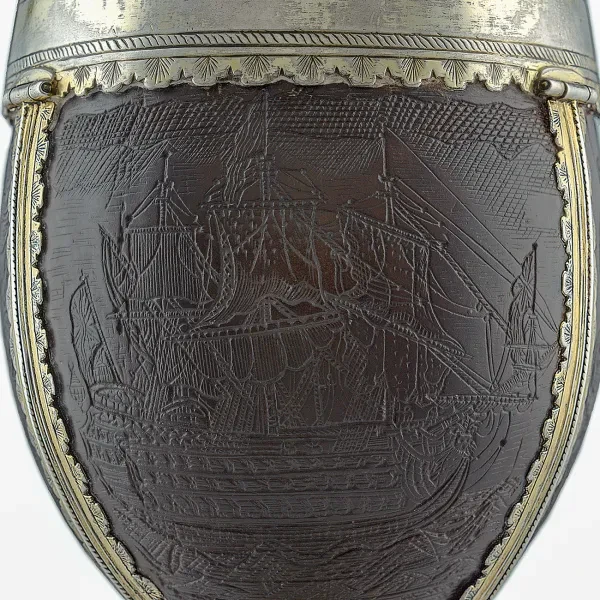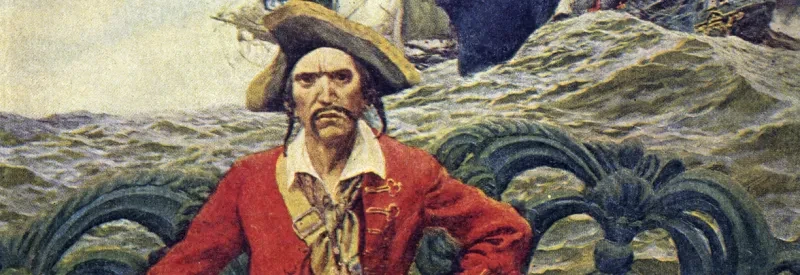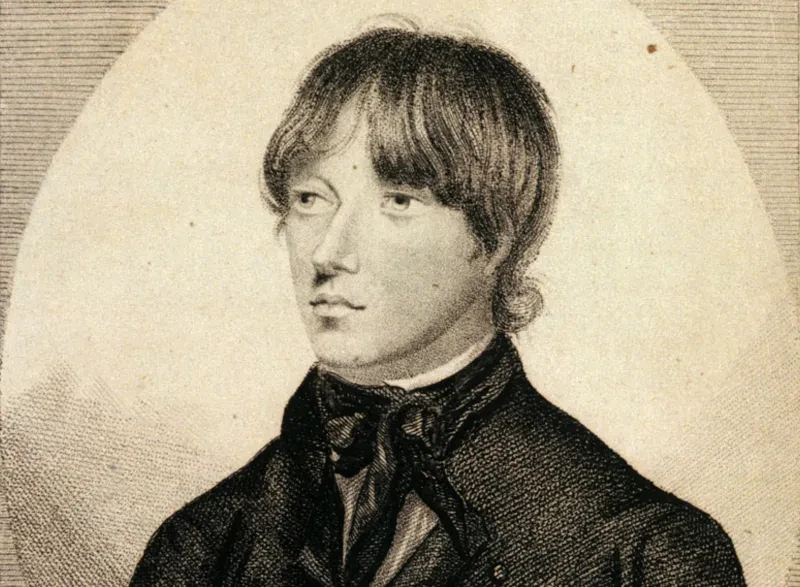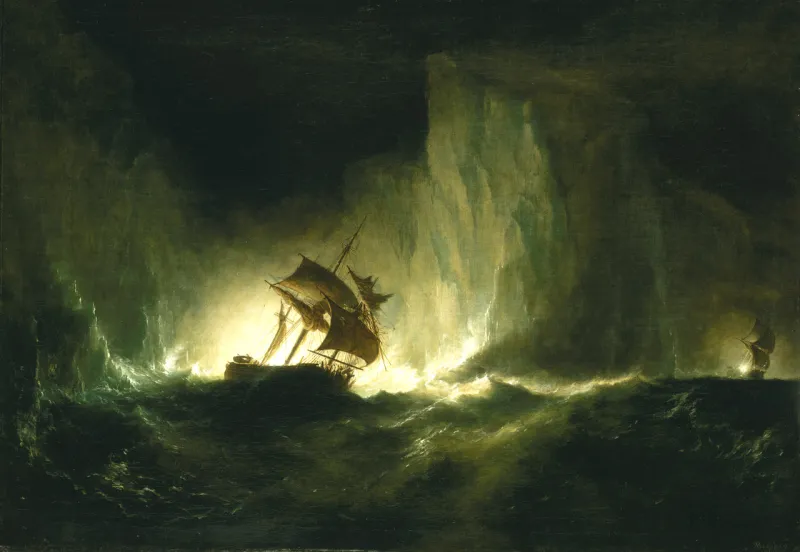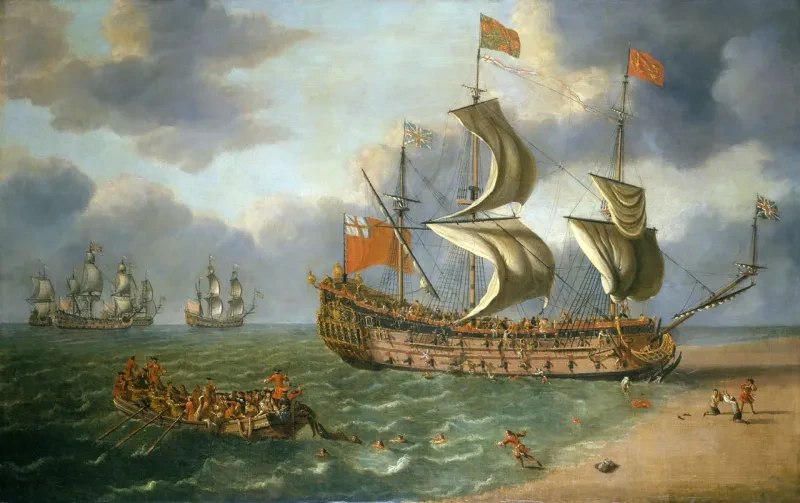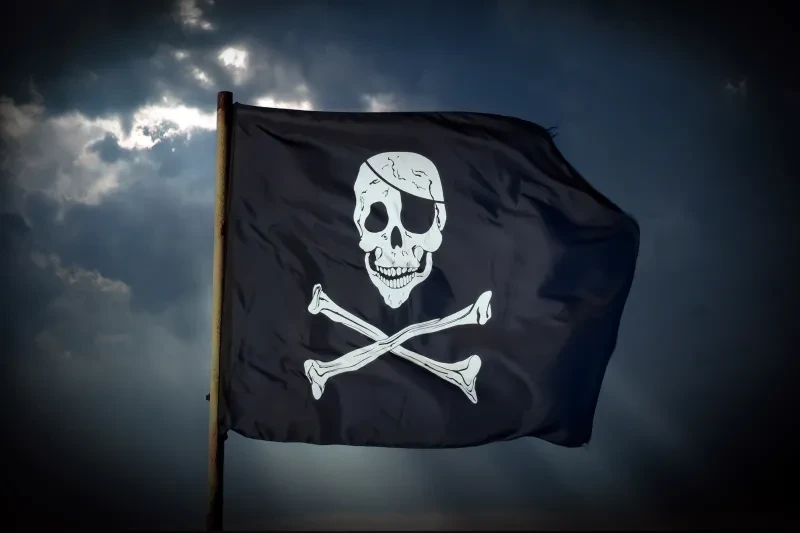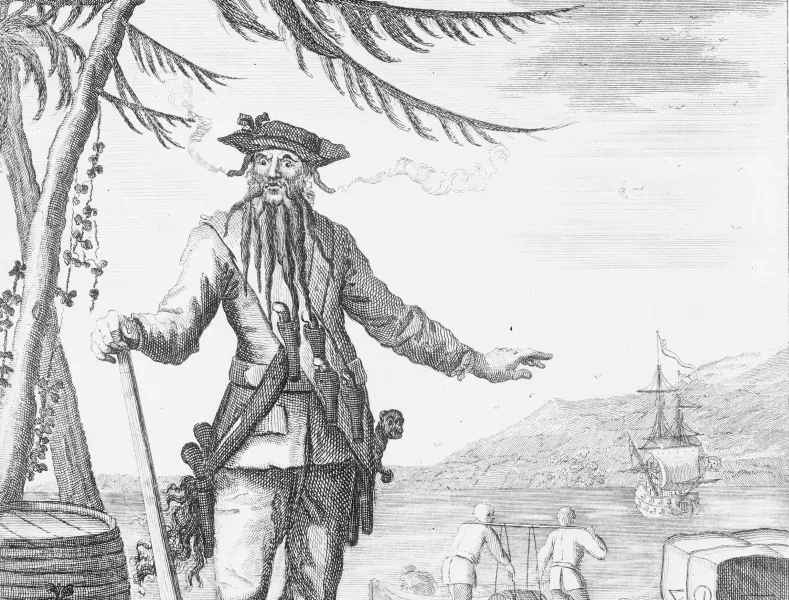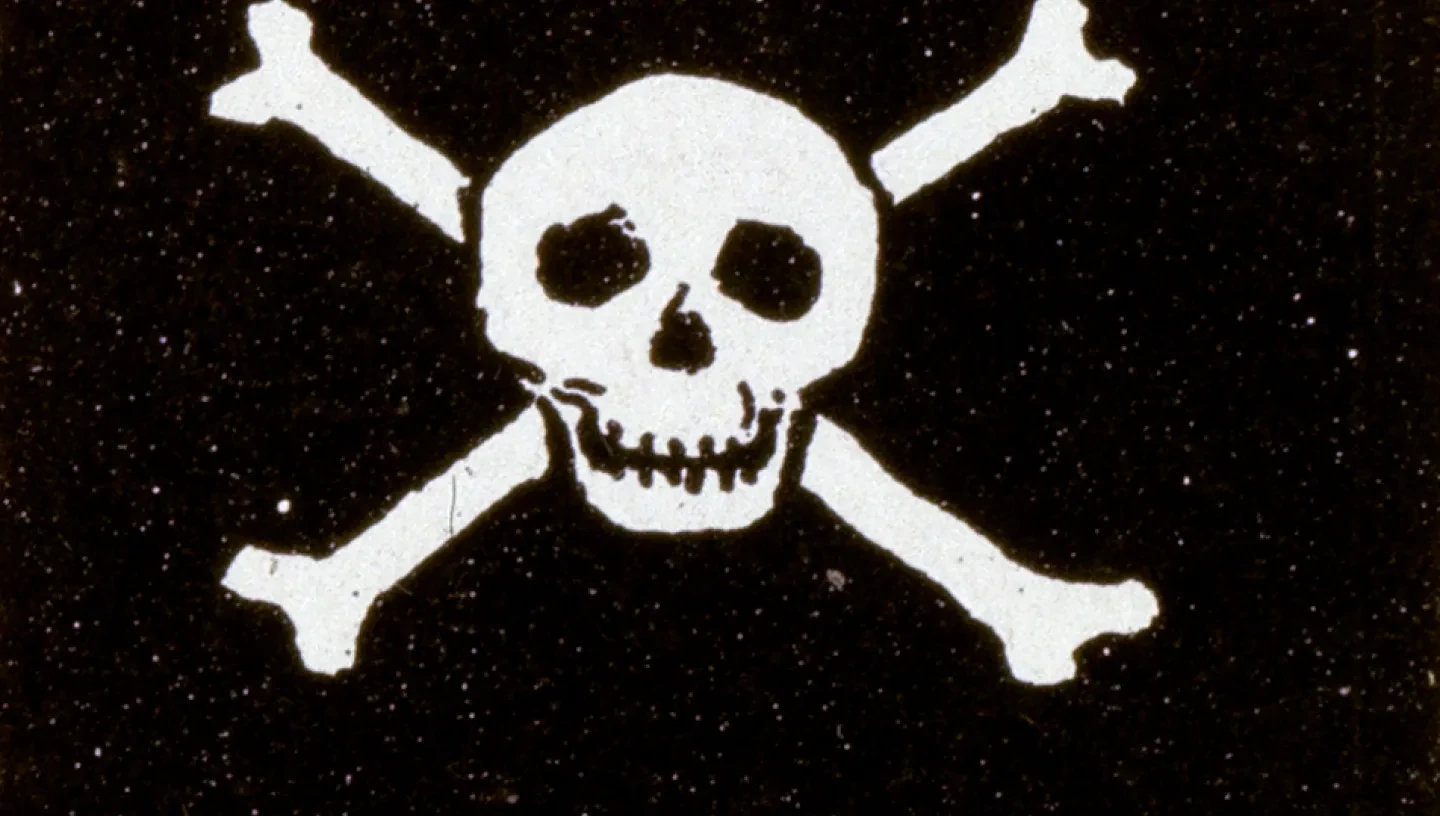
When you hear the word ‘pirate’, what comes into your head? A skull and crossbones? An eyepatch and prosthetic leg? A parrot on a shoulder and a bottle ‘o rum?
This idea of how pirates looked, sounded and acted is firmly embedded in our imagination. It’s part of pop culture and classic literature, Halloween costumes and high fashion. But how much of it is actually true?
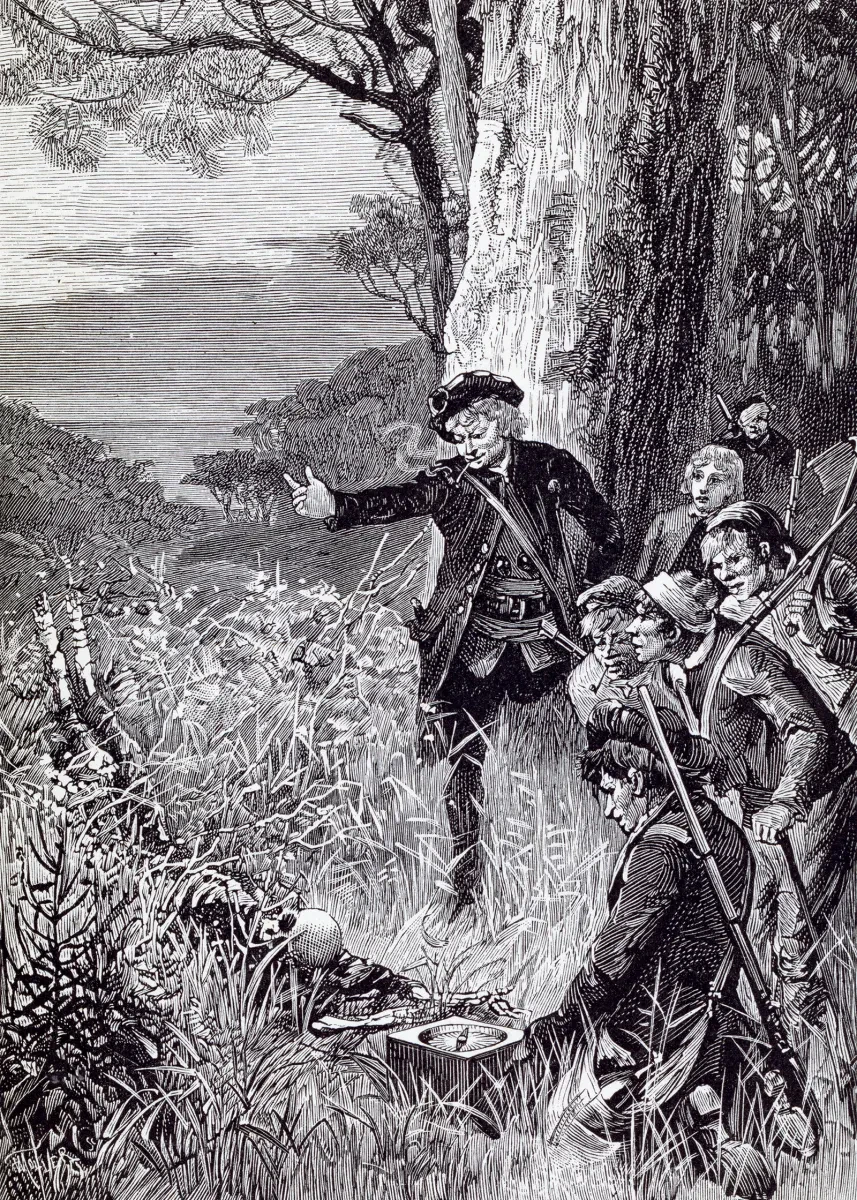
Did pirates bury treasure?
While pirates certainly sought and captured valuable cargo, they almost never buried their treasure: they mainly spent it quickly.
Pirates also didn’t make secret maps to help find buried treasure – so why do we think they did?
In books like Robert Louis Stevenson’s Treasure Island, maps where 'X' marks the spot of a hidden hoard of gold, silver and precious jewels are a key part of the plots.
That said, there is one tantalising tale of a real pirate horde for dedicated treasure hunters.
'Captain William Kidd did bury some treasure once, but just once,' writes Robert Blyth in Buried Treasure: A Pirate Miscellany. 'This was hidden on Gardiner’s Island, near Long Island, New York in 1699. It remains unclear how much treasure he buried. At least some of it was uncovered and sent to London as evidence at his trial for piracy and murder. Despite many searches, nothing else has yet been found. Presumably Kidd expected to recall where he’d stashed the valuables, so he probably felt no need to draw a map.'
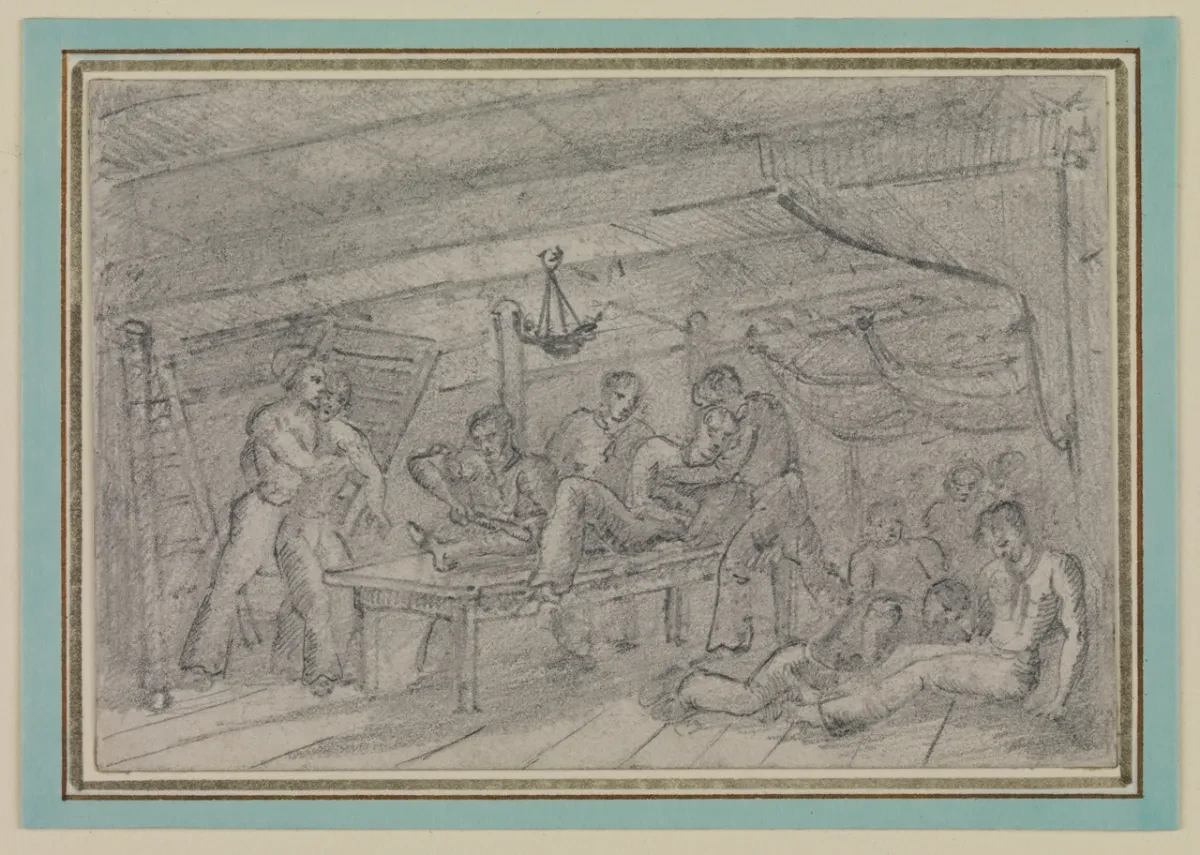
Did pirates have wooden legs and eye patches?
This classic pirate stereotype does actually have some historical basis.
'Since seafaring was a dangerous profession we find that pirates, like all sailors, were subject to serious injuries and there were men among pirate crews who had wooden legs or had lost the sight of an eye,' write David Cordingley and John Falconer in Pirates: Fact & Fiction.
Once again however, it's thanks to the novel Treasure Island and its many screen and stage adaptations that this image became so fixed in our minds.
'I was sure he must be Long John,' Treasure Island protagonist Jim Hawkins says in the novel. 'His left leg was cut close by the hip, and under his left shoulder he carried a crutch, which he managed with wonderful dexterity, hopping upon it like a bird.'
It's worth noting that Long John Silver has no eyepatch in the book – despite what later depictions, including the coin below, would have you believe...
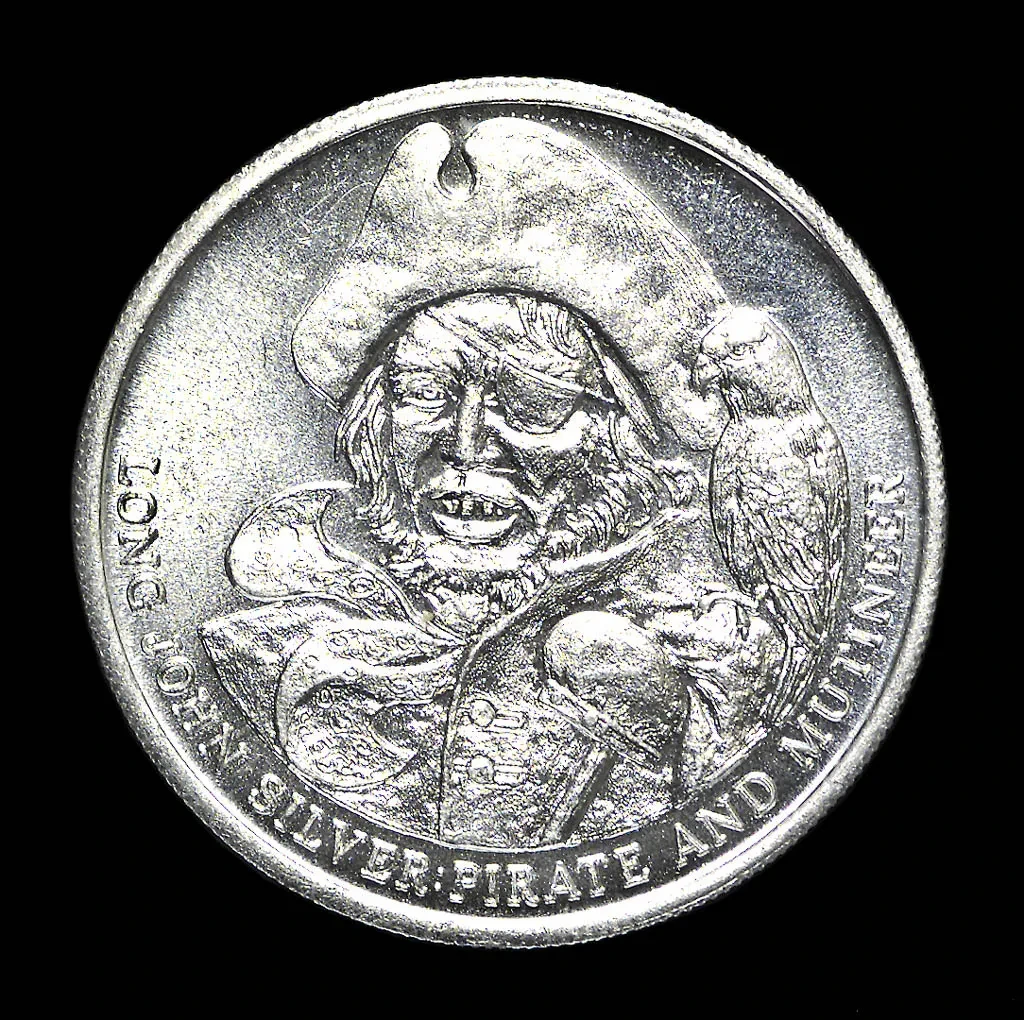
Did pirates keep parrots?
Maybe. Pirates may have kept parrots, but probably as valuable things to sell rather than as pets.
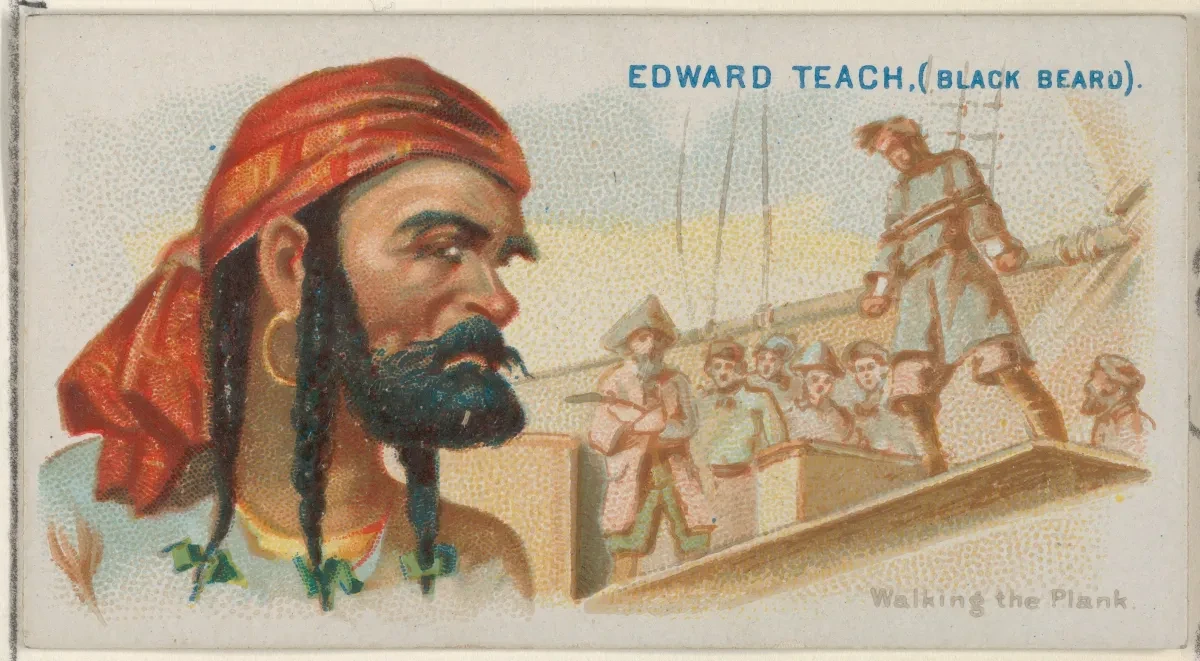
Did pirates make people walk the plank?
Pirates never made their victims walk the plank. They just threw them overboard or abandoned them on desert islands.
'Marooning' – deliberately leaving someone on an uninhabited island – was one of the punishments a pirate captain would have used to maintain discipline among their crew.
'In real life, the most famous marooned person wasn’t a pirate but a privateer,' writes Blyth in A Pirate Miscellany. 'Alexander Selkirk (1676–1721) was put ashore on Más a Tierra, one of the Juan Fernández Islands off the coast of Chile, in 1704, having complained to his captain about the seaworthiness of the ship. Selkirk was right to be worried: the ship later sank with no survivors. In 1709, after four years and four months entirely alone, he was finally rescued. Selkirk was the inspiration for Daniel Defoe’s novel Robinson Crusoe (1719).'
Walking the plank and its association with pirates seem to be due to its key role in J.M. Barrie’s Peter Pan and its subsequent appearance in several pirate films.
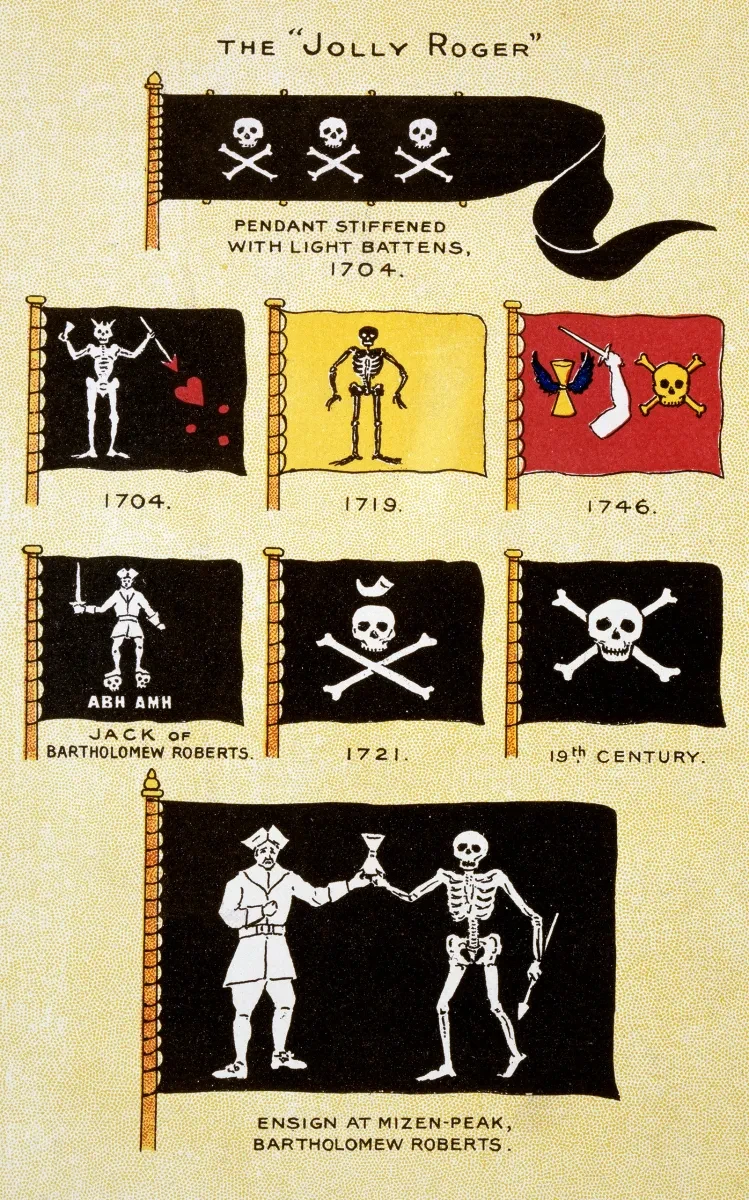
Did all pirate flags use the skull and crossbones?
The infamous skull and crossbones, often seen on tombstones and immediately recognisable as a symbol of death, is just one example of pirate flag design.
In the late 17th and early 18th centuries several pirates of the ‘golden age’ adopted their own distinct designs, usually a white or red motif on a black background. These flags often featured skulls, crossed bones, skeletons and hourglasses, which all represented mortality.
The flags were designed to frighten victims into surrendering without a fight, allowing a pirate captain to gain treasure without risking crew in combat.
'On occasion,' adds Blyth, 'a pirate ship might also carry a red flag. If the black Jolly Roger was insufficient to make a ship surrender, flying a red flag meant the pirates would fight to the death to capture their target.'
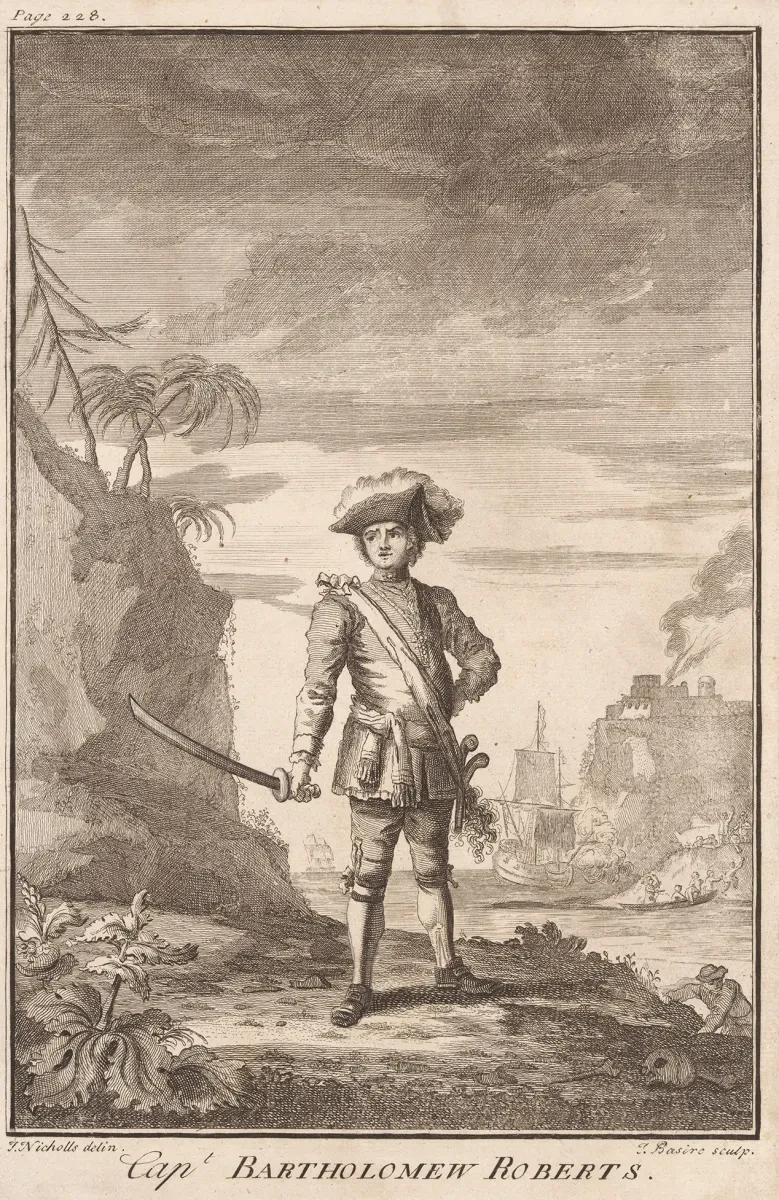
Did ships follow a ‘pirate code’?
While pirates were undoubtedly violent, it’s wrong to assume that life on board ship was chaotic and unruly.
Many pirate captains adopted a code of conduct for their crew, designed to ensure that the ship was run fairly and efficiently. A well-organised crew increased the chances of success.
The pirate Bartholomew Roberts for example had 11 articles, including the seemingly quaint command that 'lights and candles [should] be put out at eight o’clock at night. If any of the crew wants to continuing drinking after that hour, they must do it on the open deck.'
Pirate captains also listed the punishments for breaking the rules, including 'marooning'. In some cases, the crew decided what degree of discipline was required. Any disputes between individuals were usually settled ashore.
Roberts’s pirate code even extended to guarantees on how treasure would be shared and how crew members would be compensated should they be injured in the line of duty.
'If any man should lose a limb or become disabled,' the code supposedly stated, 'he is to have 800 pieces of eight, with smaller amounts for lesser injuries.'
Captains may have had other motives for keeping their ship happy. Pirates often voted for their captain: if a captain didn’t do a good job, the rest of the crew could get rid of them…
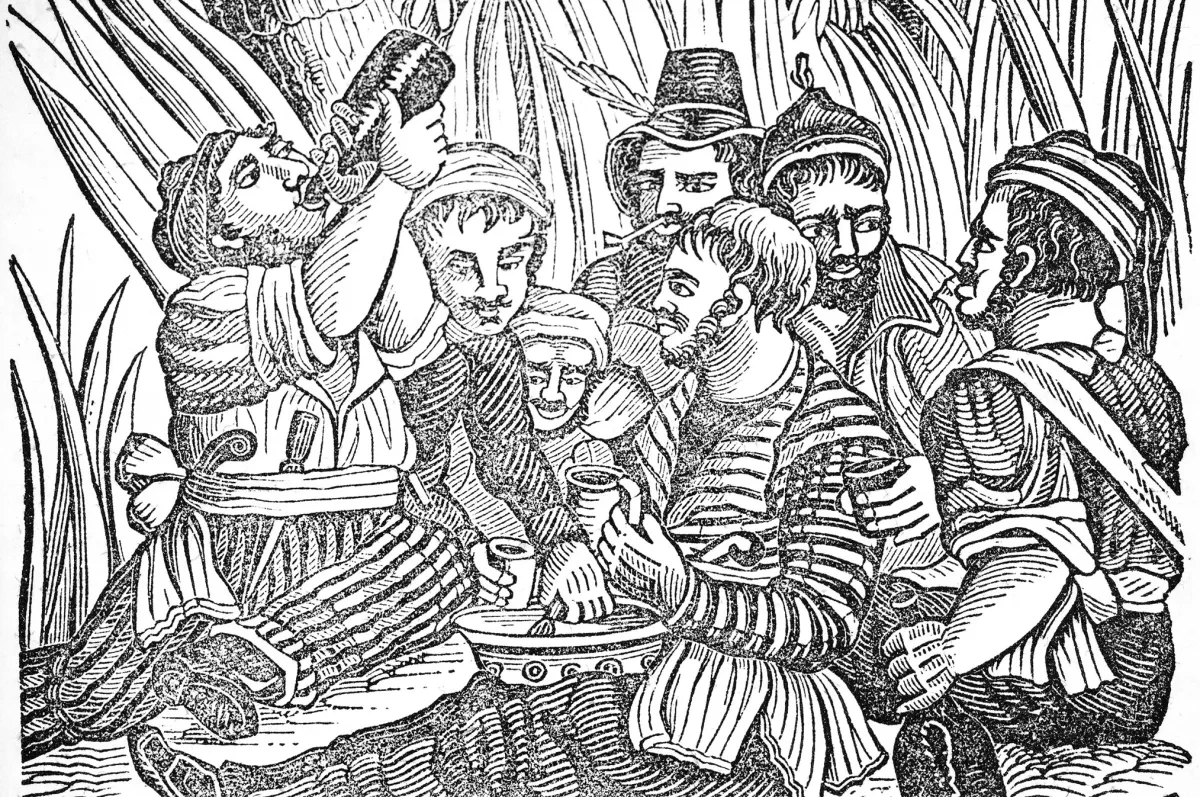
Were pirates always drinking rum?
Not always! Some pirates, like Bartholomew Roberts, preferred to celebrate with a cup of tea instead.
Unfortunately for Roberts, his crew didn't always see eye to eye with him on this point.
On 9 February 1722 the crew of Roberts's ship the Royal Fortune reportedly celebrated the capture of a prize by drinking through the ship's stocks of liquor. The following day, Royal Navy warship the Swallow, led by Captain Chaloner Ogle, tracked them down.
'Although his crew was decidedly under the weather, with many of the men still drunk or heavily hungover, Roberts chose to fight,' Blyth describes in Captain Ogle’s Cup: A Pirate Adventure.
It would be his final act.
'A series of broadsides from Ogle’s ship rendered the pirates’ vessel essentially immobile, with masts and rigging destroyed,' writes Blyth. 'Roberts’s death was swift and bloody. Grapeshot, dozens of pieces of lead shot used as an anti-personnel weapon, was fired from the Swallow. Some of this struck Roberts in the neck and tore out his throat, killing him at once.'
Did pirates say “arrrrr!”?
The classic way to 'talk like a pirate' unfortunately has no historical basis. Disney’s 1950 film adaptation of Treasure Island was the studio’s first live-action feature – and the film that gave birth to the modern idea of how pirates talked.
The Dorset-born Robert Newton played Long John Silver with a West Country accent that is now synonymous with how we expect British pirates to sound.
Real pirates came from diverse backgrounds and nationalities, speaking various languages and dialects based on their origins.

